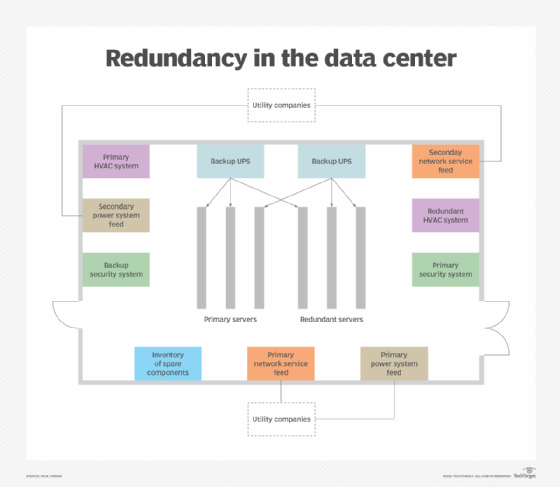Exactly How to Handle Redundancy Pay If Company Goes Bust: Secret Information for UK Employees
Exactly How to Handle Redundancy Pay If Company Goes Bust: Secret Information for UK Employees
Blog Article
Investigating the Interaction In Between Business Redundancy and Business Flexibility for Future Development
In the vibrant landscape of today's company globe, the complex relationship in between company redundancy and business flexibility arises as a crucial element for sustained development and success. Firms frequently deal with the difficulty of striking a fragile equilibrium in between keeping a level of redundancy to mitigate risks and promoting versatility to react quickly to the ever-evolving market needs.
Relevance of Business Redundancy
Firm redundancy is an essential element that enhances organizational resilience and reduces operational dangers. By integrating redundancy procedures within the business structure, business can better endure unanticipated disturbances and variations in business atmosphere. Redundancy offers as a critical barrier, allowing firms to adapt and react successfully to unforeseen obstacles without endangering important operations.
One trick facet of the importance of firm redundancy is its duty in making sure continuity during times of situation. When encountered with unexpected adjustments or emergency situations, redundant systems, sources, or employees can step in to maintain crucial features and stop prevalent disturbances. This connection not only safeguards the company's online reputation and consumer count on but also decreases financial losses and functional downtime.

Approaches for Business Adaptability

One more vital approach is buying technology and facilities that can sustain flexibility and scalability. Executing electronic tools, automation, and data analytics can streamline procedures, improve performance, and give important insights for notified decision-making. In addition, creating versatile business frameworks that permit quick adjustments to market dynamics and client requirements is crucial for remaining affordable in a swiftly advancing environment. By proactively recognizing possible disturbances and possibilities, companies can proactively adapt and grow in an ever-changing organization landscape.
Balancing Redundancy and Flexibility
Achieving a harmonious stability between operational redundancy and business adaptability is vital in navigating the intricacies of a dynamic company environment. Striking the ideal equilibrium between redundancy and versatility is a fragile procedure that requires a deep understanding of the organization's objectives, sector dynamics, and danger tolerance.
To achieve this balance, business require to perform normal analyses of their operations to identify areas where redundancy is required for threat reduction and where versatility can drive technology and development. Applying adaptable frameworks, cultivating a society of continual understanding and improvement, and encouraging open communication across all degrees of the company are crucial methods to balance redundancy and versatility efficiently. By aligning these two critical aspects, companies can place themselves for sustainable development and success in an ever-changing business landscape.
Instance Researches on Adjustment Success
In taking a look at instances of successful business adjustment, it becomes apparent that the interplay in between functional redundancy and flexibility is a specifying aspect in shaping resistant organizations. One compelling situation study is that of Netflix. At first a DVD rental service, Netflix showed exceptional flexibility by transitioning right into a streaming system when digitalization see this interrupted the industry. By strategically purchasing technology and web content development, Netflix not just made it through yet prospered in a swiftly progressing market. Another standout instance is Amazon. Starting as an on the internet bookstore, Amazon constantly adjusted its service design, broadening into varied industries such as cloud computing and man-made intelligence. This versatility enabled Amazon to remain ahead of competitors and fulfill altering consumer demands. Last but not least, Adobe offers a significant illustration of effective adaptation. The business moved from marketing software application licenses to a subscription-based version, guaranteeing persisting revenue streams and improved client involvement. These study highlight the significance of functional redundancy combined with business versatility in fostering long-lasting development and competition.
Structure Durability for Future Growth
Building resilience for future growth needs a tactical positioning of operational processes with market characteristics and arising fads. Business need to adjust to altering atmospheres by promoting a culture of flexibility, development, and continuous renovation. Strength includes not only bouncing back from troubles yet additionally proactively getting ready for future challenges. One crucial aspect of building resilience is buying durable risk management strategies to minimize prospective disruptions. This consists of situation planning, expanding supply chains, and creating contingency plans for various contingencies (who pays redundancy money).
In addition, cultivating solid connections with stakeholders, such as clients, workers, providers, and the neighborhood, is crucial for preserving and weathering uncertainties count on and support throughout unstable times. Reliable interaction and transparency play an important role in structure strength, as they home assist facilitate and straighten assumptions partnership in browsing unpredictabilities.
Additionally, organizations require to prioritize knowing and growth initiatives to upskill employees and furnish them with the essential devices to adapt to altering scenarios. By purchasing their labor force, firms can enhance their adaptability and agility, eventually reinforcing their strength for sustainable future growth.
Conclusion

In the vibrant landscape of today's company globe, the intricate connection in between company redundancy and business flexibility emerges as a crucial aspect for continual growth and success. Business often face the difficulty of striking a fragile equilibrium between preserving a degree of redundancy to minimize risks and promoting flexibility to respond swiftly to the ever-evolving market demands.To attain this equilibrium, companies need to carry out normal analyses of their operations to identify areas where redundancy is needed for threat reduction and where adaptability can drive advancement and development.In conclusion, the interplay between company redundancy and business versatility is crucial for future growth. Building durability with a mix of redundancy and versatility will certainly make certain that firms are prepared for try here the challenges of the future.
Report this page